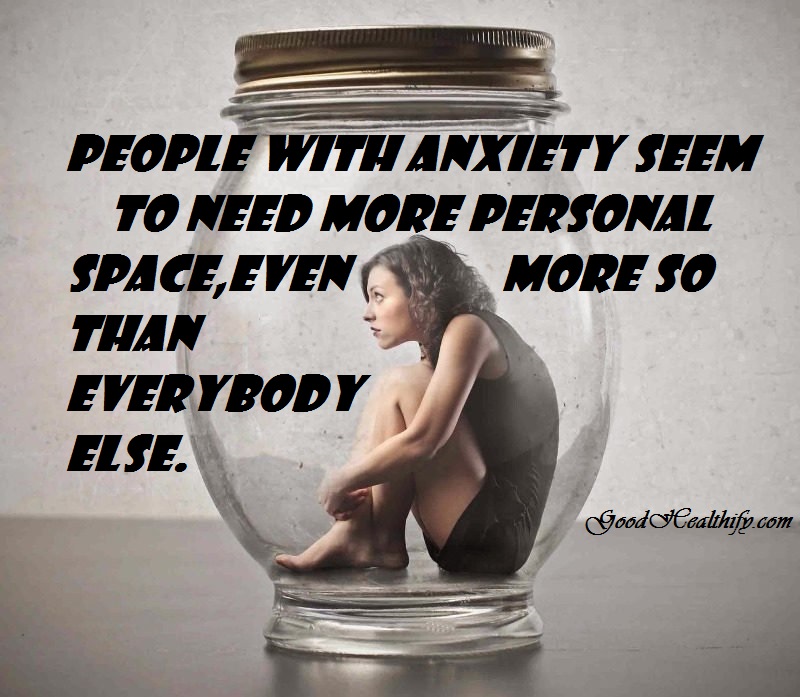People with Anxiety Need More Personal Space Than Everybody Else, Studies Show
Do you have anxiety? Well, you may have noticed that you need lots of personal space. Let me approach this with an example of what your personal space is and represents with your safety. For example, personal space is sometimes referred to as a dynamic sphere in martial arts. This might help you get a big picture about your surrounding sanctuary.
When I connect the two, I secretly fantasize about taking down the enemy who comes into my sphere, capturing and, in the process, defeating my fears. Unfortunately, life isn’t that easy for people with anxiety, we have a hard time differentiating what others really want from us. So, I am placing my Aikido book back on the shelf, and approaching this in another.
Our personal spaces
So, how big is this sphere of protection which surrounds us every day? Well, according to the Journal of Neuroscience, this depends on the person. For ordinary people, those who don’t suffer from anxiety, this space is generally between 8 and 16 inches. People with anxiety need personal space much larger than that.
Giandomenico Lannetti, neuroscientist at the University College London, said,
There is a pretty robust correlation between the size of the personal space and the level of anxiety of the person.
Test it!
Now we know that personal space varies from person to person. With that being said, I think we should try and understand why. What better way to find out than test the theory, which is more than a theory by now. This is what we discovered.
The subjects are 15 healthy people with electrodes, which deliver electric shocks, attached to their hands. As the participants reached out their hands, they receive a shock, which in turn makes them blink. For people with anxiety, the further out they reach, the more powerful the shock and the more powerful the reaction. This quick reaction travels from the brain stem straight to the muscle, bypassing where conscious thoughts occur, the cerebral cortex.
Michael Graziano, a researcher at Princeton University, said,
The results seem logical-one can imagine that an anxious person would be less inclined to want to cram into a crowded subway car or packed party.
Blinking is also more pronounced just a few inches from the face, but not to a large degree. Apparently, reflex strength increases closer to the face.
Nicholas Holmes, researcher at the University of Reading in England, said,
It very nicely shows how vision, touch, posture and movement all work together extremely quickly and in close coordination…in controlling movement and defending the body.
These studies aren’t new!
Animals were previously studied to determine the mechanics of their personal spaces. Zebras, for example, show a marked difference when one is more anxious than the other. An anxious zebra, when a lion attempts to approach, will require a huge flight zone. This allows a greater response time to formulate an escape plan. Humans are much the same and sometimes experience this in extremes. This is when personal space turns into claustrophobia and agoraphobia.
Other conditions play into this as well. Cultures are different throughout the world, and they all tend to have unique ideas of how large personal space is supposed to be. Some humans enjoy extremely close contact while others prefer little to none, during social times. People with anxiety, most likely, would relate more to a society which endorses less casual touching or kissing. Of course, that one was my personal opinion. Personally, I’m not that keen on kiss greetings. Then again, that’s just me.
Relationships can also place conditions on personal space. In order to gauge trust, sometimes your own little sphere is the indicator. The more you trust, the closer you get, it’s just that simple.
As the concept of the dynamic sphere is interesting, it cannot put the whole picture into perspective. Yes, we need a good defense system and yes, we must respect personal spaces, but there comes a time in everyone’s life where…
We have to let them in. Yes, you too.



























